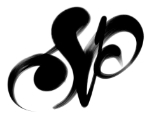The fundamental power of lines has always fascinated me as an artist. They are the building blocks of all artistic expression—the very DNA of visual communication. A single line can convey emotion, create depth, or suggest movement. When combined, lines weave the intricate tapestry of art history, from Renaissance masterpieces to contemporary digital creations.
The Timeless Language of Lines
Throughout history, artists have wielded lines as their primary tool for expression. Renaissance portrait artists used delicate contours to capture the human form with unprecedented realism. Impressionists broke these lines into fragments to capture light and atmosphere. Picasso and his fellow cubists deconstructed and reconstructed lines to challenge our perception of reality.
Masters of Pattern and Metamorphosis
One artist who truly understood the transformative power of lines was M.C. Escher. His metamorphic works demonstrate how lines can seamlessly morph one form into another, creating visual puzzles that still captivate audiences today. What Escher crafted by hand has now inspired countless digital artists and even influenced modern visual effects—think of the famous "impossible staircase" sequences in contemporary films.
Nature's Geometry and Digital Art
The natural world itself is a master artist when it comes to line and pattern. Fractals, those infinitely repeating mathematical patterns, mirror the geometry we see in snowflakes, ferns, and coastlines. This natural geometry has inspired a whole genre of generative art and influenced product design through biomimicry—where nature's time-tested patterns inform human innovation.
The AI Revolution in Art
Today, we stand at a fascinating intersection where artificial intelligence meets artistic expression. AI models are now being trained to recognize and replicate different line styles, brush strokes, and artistic techniques. This technology isn't replacing human creativity but rather opening new avenues for artistic exploration and expression.
Looking Ahead: Digital Twins and Beyond
As we move forward, the convergence of art, technology, and automation is accelerating. Workflow tools are streamlining creative processes, while the emergence of digital twins—virtual replicas of physical objects or systems—promises to revolutionize how we design and create. These AI-powered digital twins will allow us to experiment with form and function in unprecedented ways.
A Call to Create
The future of art and design lies in the harmonious blend of traditional artistic principles with cutting-edge technology. As we enter this new era, the fundamental importance of line, space, and form remains constant—even as our tools for exploring them evolve.
Are you ready to embrace this exciting frontier where classical artistic principles meet artificial intelligence?
#genaiart #promptengineers #genart #art










